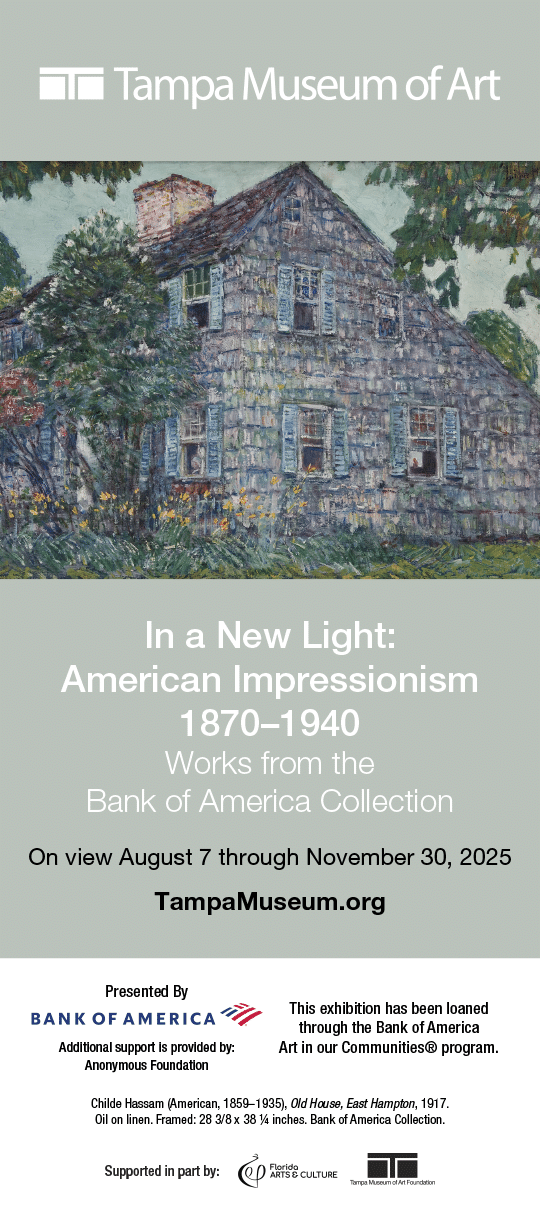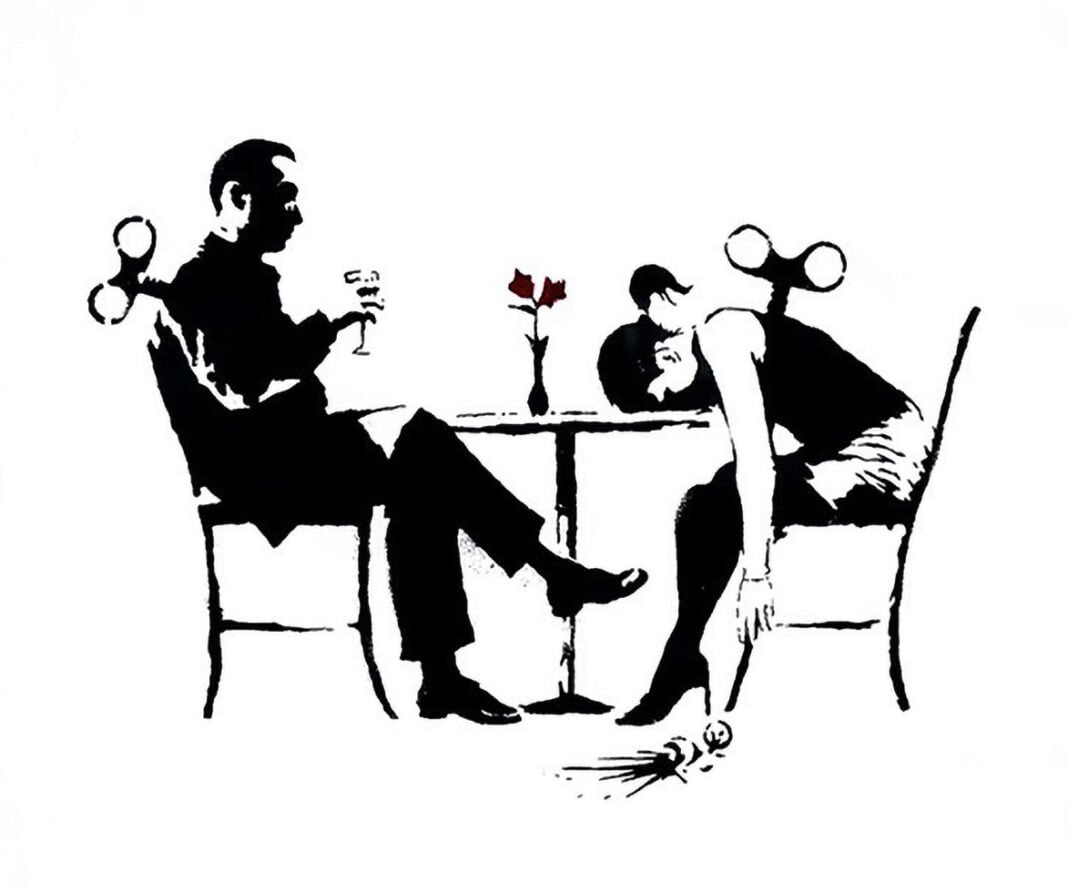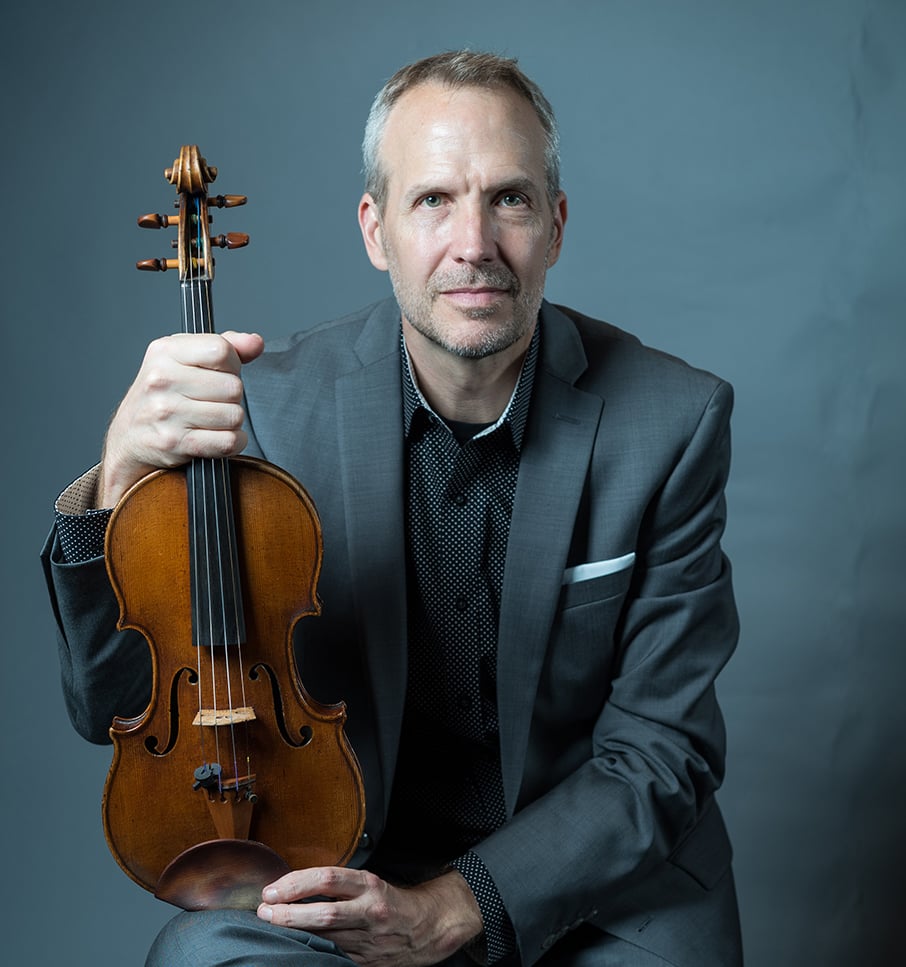How did one of the world’s largest collections of works by the enigmatic British artist known as Banksy end up in the Tampa Bay area? And how does someone even acquire art made by a pseudonymous figure?
Banksy is one of the world’s most famous artists, yet his identity remains unknown. He began his career in the early 1990s with the DryBreadZ Crew in Bristol, England. Initially creating freehand graffiti, he shifted to stenciling around 1994, eventually relocating to London. His first large-scale stencil mural to gain widespread attention was The Mild Mild West, which depicts a teddy bear hurling a Molotov cocktail at three riot police.
Today, Banksy is an international sensation and a media darling, all while maintaining his anonymity. His politically charged works routinely sell for millions and are owned by celebrities like Brad Pitt and Christina Aguilera. Exhibitions in Los Angeles and London have sold out. His 2018 stunt, in which he remotely shredded Girl with Balloon moments after it sold at Sotheby’s for $1.4 million, only amplified his mystique. That piece, now partially shredded with half the canvas dangling from the frame, recently resold for $25.4 million.

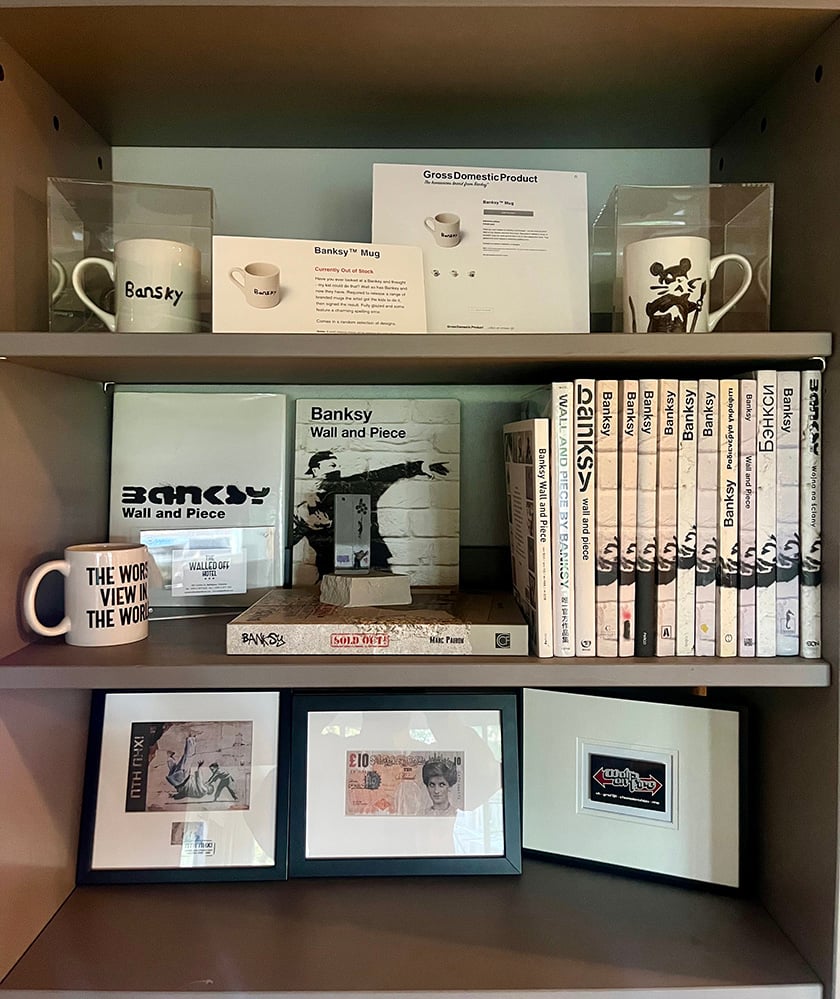
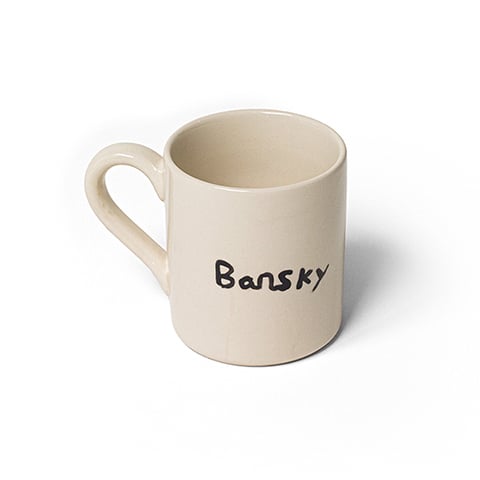
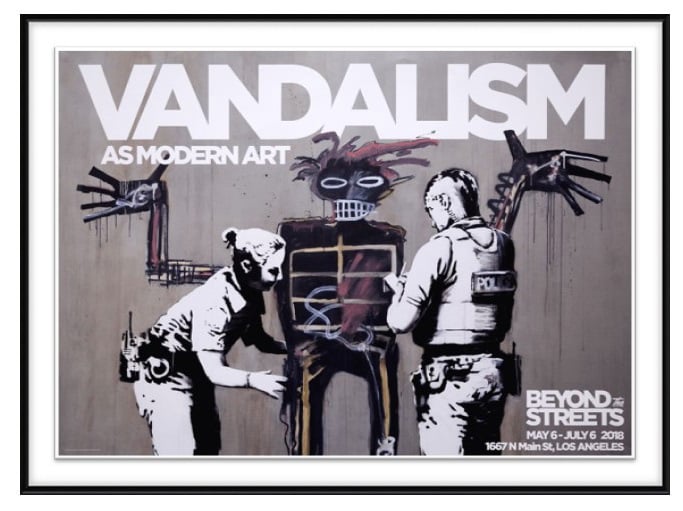
Nick Suszynski owns more than 400 individual Banksy artifacts, including early limited prints, stickers, books, album covers, and vintage items. A father of four and Director of Development at Jesuit High School in Tampa, Suszynski seems an unlikely collector of something so elusive. His obsession is relatively new, sparked during the pandemic when, like many of us, he found himself with more time to explore personal interests. Street art’s ability to provoke and disrupt in public spaces fascinated him. Banksy stood out not just for the mystery, but for his razor-sharp wit and poignant social commentary.
The documentary Banksy and the Rise of Outlaw Art inspired Suszynski to purchase his first piece: an official program from Banksy’s 2015 Dismaland Bemusement Park, where 58 artists collaborated to create a dystopian take on the classic theme park. Holding that program, Suszynski says, felt like holding a piece of cultural history.


His collection now includes rare items like a flyer from Banksy’s first exhibition, Walls on Fire (1998), and an original issue of Venue magazine from the same year featuring Banksy on the cover. One of the most unique items is a pair of Puma suede trainers made exclusively for the Turf War show in London in 2003. Fewer than twenty pairs were made, never sold publicly, and Puma’s German headquarters now houses a pair on permanent display. Most of Suszynski’s pieces come from the UK, so he’s become something of an expert in international shipping, currency exchange, Brexit logistics, and the dreaded VAT.
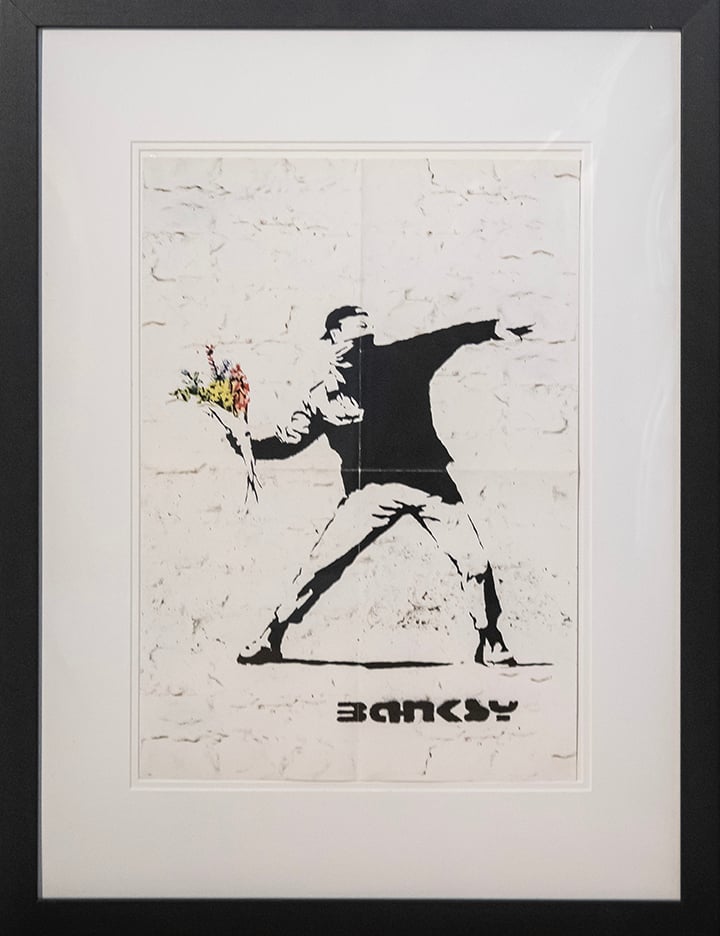


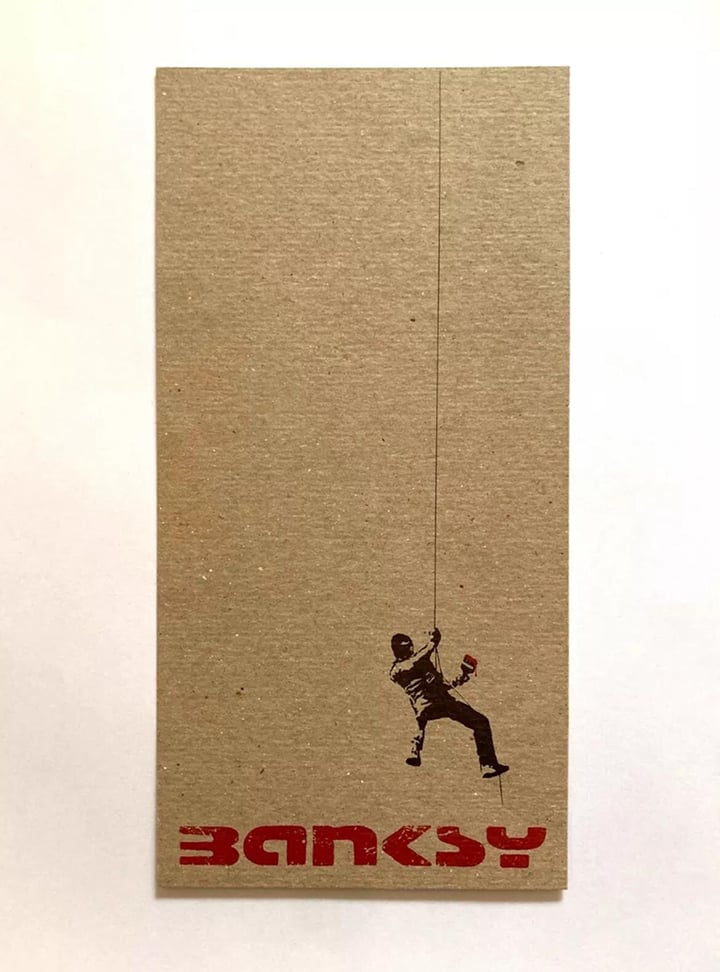


So, how does one confirm authenticity in a market rife with forgeries and unauthorized reproductions? Since Banksy doesn’t copyright his images, the art world is flooded with questionable pieces. A group called Pest Control handles authentication of official Banksy artworks and is also the only way to officially contact the artist. However, Pest Control only certifies commercial works such as paintings, prints, and sculptures. Flyers, posters, stickers, and T-shirts fall outside their scope. To assess those, Suszynski relies on three factors: provenance (meaning where and when the item was obtained), meticulous research, and most importantly, buying only from trusted sellers.
Trust is crucial on both sides. Suszynski needs to be confident that the seller is being truthful, and he also says that he is often being vetted by the person selling the items to make sure that he as the buyer is purchasing the work for his collection and not just to turn a quick profit. Since official items are rare, sellers can afford to be choosy, and very often are.

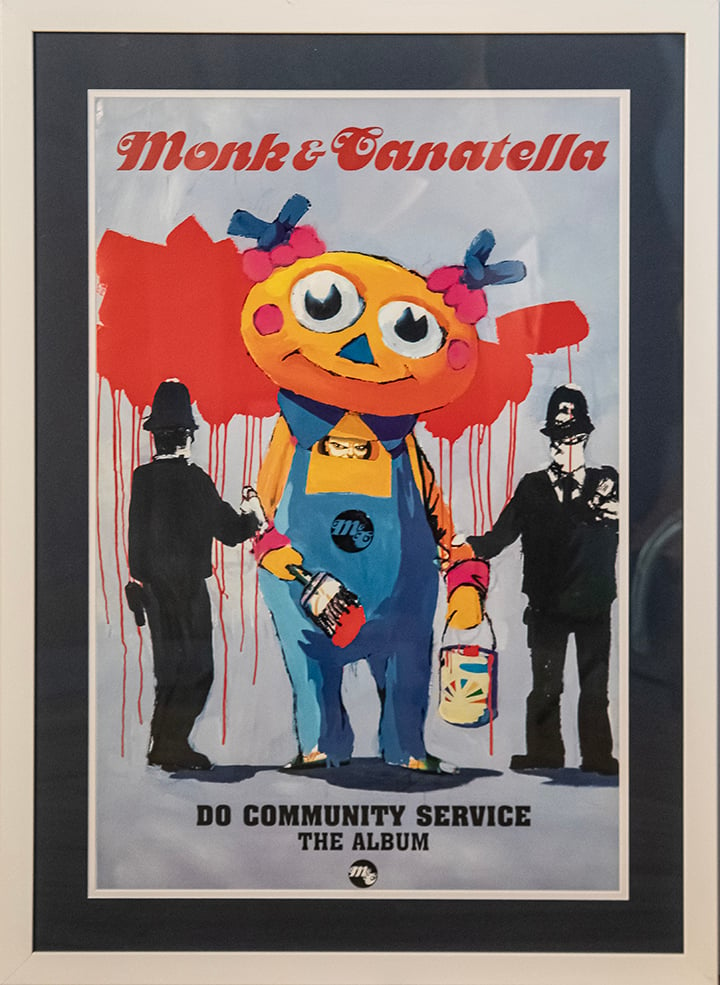

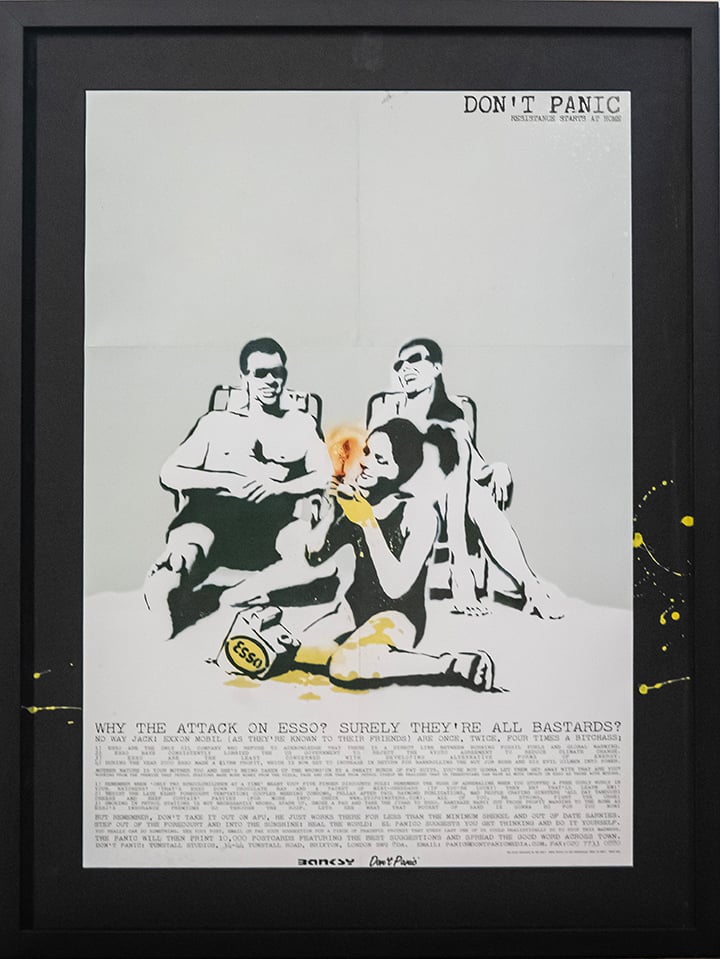
Despite the high value of many pieces, Suszynski doesn’t view the collection as an investment portfolio. To him, it’s a way to preserve the legacy of an artist he believes is vital for his commentary on society and ability to tackle difficult issues. He’s especially drawn to how Banksy juxtaposes innocence with harsh realities, using humor to make weighty themes more approachable. The work is disarming. It invites us to confront in-justice, often in unexpected ways.
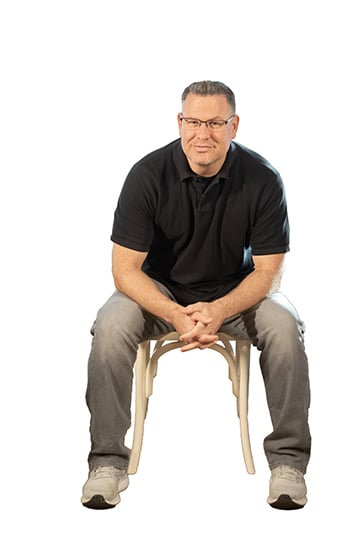
Nick Suszynski
Suszynski’s long-term goal is to put the collection on permanent public display, allowing people to experience Banksy’s insight and wit firsthand. In the meantime, a temporary exhibition would be a great start. It seems like an easy request, given the buzz Banksy creates wherever his work appears. Suszynski has never been to England to see Banksy’s installations in person. With four young kids at home, that’s understandable. Still, one hopes we’ll all get the chance to view this remarkable collection soon, right here in a local museum. •



